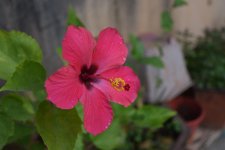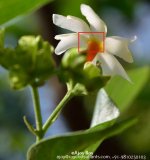singlerosa_RIP
Senior Member
The only lens that I don't let autofocus is my macro. So, no I don't manually focus my lenses (usually). I do use my camera's light meter to adjust aperture, shutter speed and ISO to get the look I want.
Does that go for focusing too? That's about the most important part of the shot.
I'm going for the "screw the meter option" since that works best.
Bracketing wasn't an option for the D3300 I fear but I got a very flashy neck strap instead that too functions as a curling iron.
Though there is no automatic bracketing in the D3300, it is easily circumvented
. Take a normal shot.
. Use +- with the wheel to change the exposure compensation
. Dial in say -3, shoot
. Dial in +3, shoot
I have tried it and it works quite fast. In fact once I shot 11 frame at 1 EV difference, while hand holding the camera. Modern HDR software aligns frames perfectly.
The only lens that I don't let autofocus is my macro. So, no I don't manually focus my lenses (usually). I do use my camera's light meter to adjust aperture, shutter speed and ISO to get the look I want.
What about cam color calibration?
That's something I don't understand. Everyone that works with graphic soft knows how important color calibration is yet a cam that is all about color strangely can't be calibrated. I'm pretty sure if I take two identical shots with two different cams, I get two different images.
It probably won't be easy to calibrate but neither would it be impossible.
 with manual focus today. I put tht focus switch on M, put camera in A mode and tried to focus the mid point on inside of flower. Tried to make the scale in viewfinder to zero while rotating the focus ring. Am I correct in manual focusing procedure? Suggestions please. Thanks.
with manual focus today. I put tht focus switch on M, put camera in A mode and tried to focus the mid point on inside of flower. Tried to make the scale in viewfinder to zero while rotating the focus ring. Am I correct in manual focusing procedure? Suggestions please. Thanks.It is either that or view it in live view at full magnification. At times I do not bother with the range finder, but shoot when the image looks the sharpest (in focus) in the view finder.View attachment 118579
I am still learning some features of D3300. Following was taken(only resized)
with manual focus today. I put tht focus switch on M, put camera in A mode and tried to focus the mid point on inside of flower. Tried to make the scale in viewfinder to zero while rotating the focus ring. Am I correct in manual focusing procedure? Suggestions please. Thanks.

Live view should be better since we see it on larger screen.
I am still learning some features of D3300. Following was taken(only resized) with manual focus today. I put tht focus switch on M, put camera in A mode and tried to focus the mid point on inside of flower. Tried to make the scale in viewfinder to zero while rotating the focus ring. Am I correct in manual focusing procedure? Suggestions please. Thanks.
I'm afraid I then have to live with a cam that doesn't know what "normal" exposure is and just tell it to stuff it when it tries to warn me.I only use manual the few times I use flash too. I have very little need for it when shooting.
So when the light is low, and the warnings annoy you, why not use that as your reason to shoot in manual?
See......you now have a reason to use that M setting
The moment I overrule, I am shooting manual. There's little reason to go M unless the cam would not allow me to change something in a different mode.
It's the M of "More work". I prefer shooting "Same thing" or "All alike".
You are just limiting yourself then, and stopping yourself from progressing in your photography.
I use S with my zoom lens and it works well, but if I forget to change the setting and take a landscape for example, even tho I may get a well exposed shot, I can get a far better shot if I switch to M and set my own parameters.
Using S or A allows the camera to take over some of the controls. Like driving an auto car. Far less fun or interesting than driving a manual car
